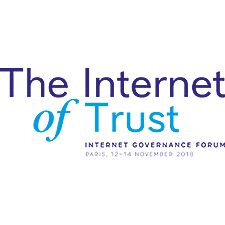Spectrum for community networks: A ‘must’ that is hard to get
12 Nov 2018 12:30h - 13:30h
Event report
[Read more session reports and live updates from the 13th Internet Governance Forum]
This session was to discuss the community network paper of the Internet Society and discuss the key policy and technical issues for community networks, the opportunities and barriers to accessing and using spectrum, as well as suggestions for change to drive CN sustainability.
The objective of the session was to discuss ‘ISOC Spectrum Paper’, the key policy and technical issues for community networks, as well as the opportunities and barriers to accessing and using spectrum.
The round-table was moderated by Ms Jane Coffin, Director, Development Strategy, Internet Society, and Mr Carlos Rey Moreno, Association for Progressive Communications, who started the session by briefly sharing an overview and then asking the panellists to share their perspective on the challenges of the existing spectrum policies, examples from their countries and provide recommendations.
Mr Stephen Song, Senior Fellow, Mozilla, Network Startup Resource Centre, shared that traditional models cannot connect all and that spectrum prices had become extremely expensive. He shared that the paper attempts to outline some of the innovations addressing those challenges ranging from shared spectrum strategies to dynamic spectrum to spectrum set-asides and tried to paint a picture of a more holistic regulatory framework for making spectrum accessible to all. He further suggested that to ensure that connectivity reaches everyone governments should adopt transparency in spectrum assignments, information of towers, fiber networks and an open data policy in government.
Mr Moctar Yedaly, Head, Information Society Division of the African Union Commission mentioned that the paper on community network is well framed and accessible to all stakeholders. He said that transparency in allocation, inappropriate rules of awarding the spectrum for different services, the unpredictability, high annual fees are concerns of the existing spectrum allocation policies. Yedaly suggested that regulators globally should set a modest price for spectrum, prioritise allocation and assignments, help operators, including community operators from mitigating risks, set the long-term vision, and adopt horizontal approaches to ensure communities get access. He further shared that his commission is working to involve the community at the base to make sure everyone can get access.
Mr Robert M Pepper, Global Connectivity and Technology Policy at Facebook, shared that the spectrum policyshould be flexible in terms of technology, service, license transfer; there should be a provision of dynamic spectrum access where spectrum allocated but not assigned have opportunistic use of spectrum that is not being used. More unlicensed spectrum should be released for new services. He further talked about the next-generation technologies, such as Wifi at 6 gigahertz his company is working on.
The Argentinian regulator Mr Agustine gar John spoke on the success of the new spectrum law which Argentina had launched, where the objective was not to earn money, but use innovative technologies such as Whitespace and releasing 400 band for rural areas. He further suggested that governments should adopt different frameworks to connect big cities and small towns and communities. The frameworks should be flexible and open to ensure everyone can be connected with the best solutions
Mr Erick Huerta Velázquez, Redes por la Diversidad, Equidad y Sustentabilidad A.C., highlighted three ways to organise the spectrum, there has to be a schedule and rules of behaviour. The spectrum should be regulated in different ways and needs to be used. Further, he shared that the regulator should take up the position to benefit the people.
Mr Deepak Maheshwari, Director, Government Affairs India, Symantec, Chair IEEE Internet Initiative, shared the Indian example of spectrum allocation, highlighting some of the challenges such as issues in allocation, no assignment, assignment but no usage, or very low usage. He highlighted the need for more success stories to open up mindsets. On unlicensed spectrum, he suggested the principles of non-exclusivity, non-interference, and non-prediction should be upheld.
As the next step, the panellist and audience were asked to read the ISOC paper and also share the information within their own communities.
By Amrita Choudhury
Related topics
Related event

